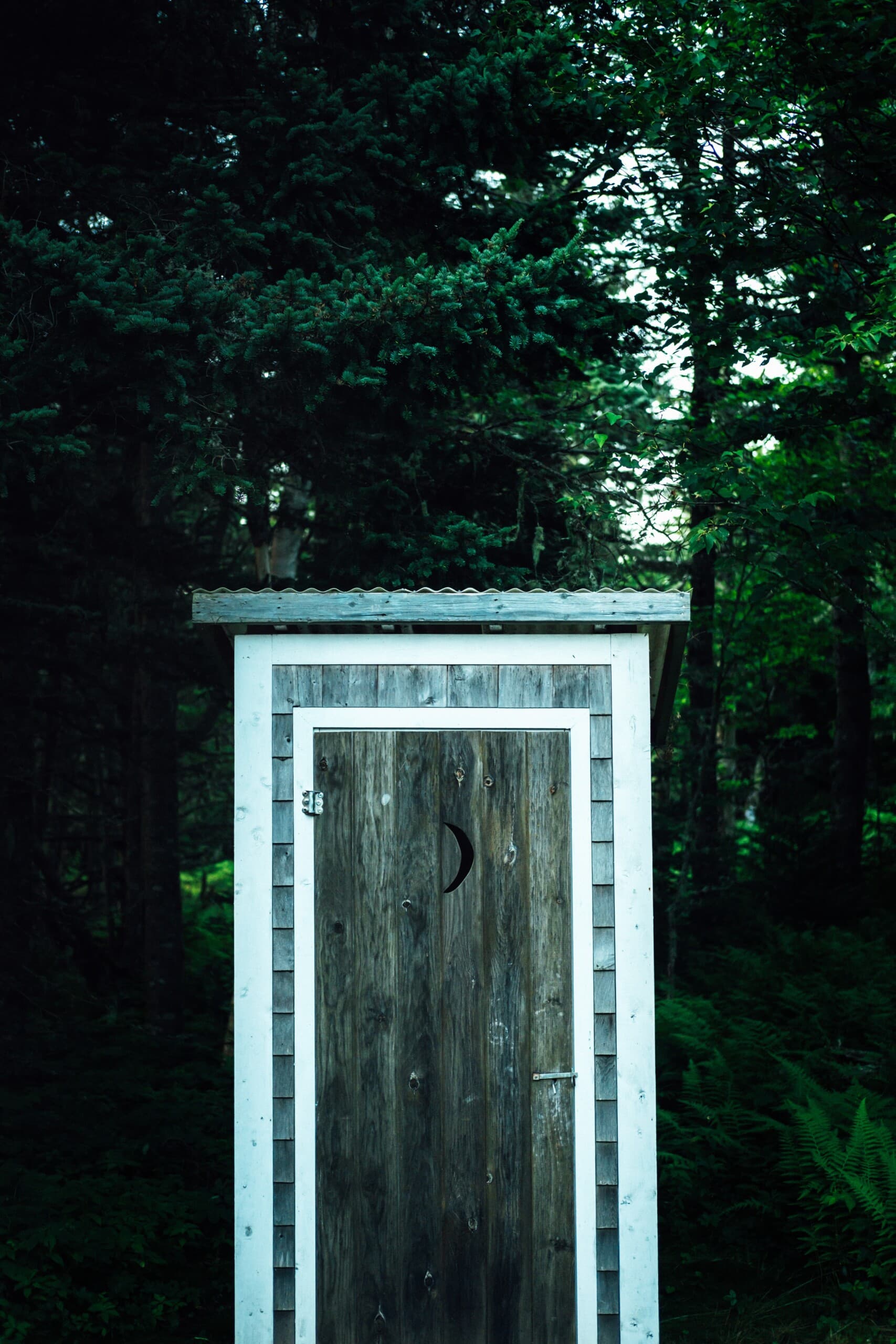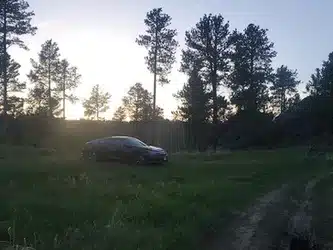Anyone who lives and works on the road and requires a reliable internet connection has probably heard the same advice: Get a signal booster. Most of the big YouTube channels expound upon their merits, and how they significantly increase the strength of the signal you receive. A better signal means better internet, right?
Not necessarily. Cell boosters are a good solution for a particular set of use cases, but they are not the magic bullet to all of your connectivity needs that some people make them out to be. Let’s unpack this a bit, and find out the truth about what boosters do well, and what they don’t do at all.
Signal Strength vs. Data Rate

You’re probably familiar with the signal strength meter on your phone or cellular hotspot. It tells you what provider you’re on, what type of signal you have (5G, LTE, etc.), and a few bars to show you if you have a strong or weak signal. The number of bars you see on your phone or hotspot’s signal strength meter is exactly that, how strong your signal is. It’s natural to assume that the stronger the signal, the better your connection, and the faster your internet works. It makes logical sense.
However, in the real world, there is no direct correlation between how strong your signal is and how fast or reliable your internet connection is. It’s true that a stronger signal is more likely to provide a good data rate, but this is not always the case.
Imagine that cellular service in a particular area is like a pie. If you’re the only person eating the pie, congratulations, you have an entire pie to yourself. If you share it with two or three people, you still have a large piece of pie. But if 10, 20, or 50 people try to get a piece of that pie, everyone’s piece is very small. It gets to a point where nobody gets enough of the pie to have a satisfying dessert.
How do we fix that situation? Bake more pies, of course. If you expect 50 people at your party, you bake several pies, not just one. You build more capacity into your pie distribution system to make sure everyone gets a reasonably sized slice of pie.
Cellular networks add capacity by building more towers and adding more equipment to them. The problem is this equipment is far more expensive than the ingredients to make more pies. It isn’t cost-effective for them to build enough capacity into their system to serve everybody who shows up only for a month or two. Only a fraction of that capacity gets used on a regular basis, so towers are designed to handle the number of users they normally have in an area. They don’t make any extra money building out the network to handle extra visitors, and it costs them a lot of money to do it, so they simply don’t.
I’ve been to places like Newry, Maine, and Hilton Head, South Carolina, where the signal strength lit up all the bars on my phone, but I didn’t even have enough data coming through to check my email. How is this possible? Both of these locations are popular vacation spots. Cellular providers install enough towers to adequately cover the usual number of people who live and work there. When a massive number of people come to visit the area on vacation, they have to share their data with everybody else there, so everyone’s data slows down. If too many people are competing for data at the same time, the data rate slows to the point of becoming unusable. This is what happens in Quartzsite, Arizona, with an official population of 3,714 as of 2019, when it swells to a million or more during the winter.
Similarly, I’ve been out in the middle of nowhere with only one or two bars of signal but had fast enough data to watch high-definition video. The signal wasn’t strong, but virtually nobody was using it, so I pretty much had the entire pie to myself. The bottom line is that to get usable internet data, what you should care about is getting a decently sized slice of the pie, regardless of signal strength.
Boosters Solve the Wrong Problem
Manufacturers of cellular boosters claim their devices can boost your signal from one or two bars to three or four. This is absolutely true. These devices work exactly as they are claimed, and that’s the problem. Increasing signal strength does not automatically get you a faster data rate. In reality, it often doesn’t change it at all.
Another thing signal boosters can’t do is give you a signal where one doesn’t already exist. They can boost an existing signal, but they can’t create one from nothing. Only a better location can do that. You can obtain this either by moving someplace else or by installing an antenna on the outside of your vehicle, as high as possible, to improve reception. A better antenna will not only let you receive a signal the tiny one built into your phone or hotspot can’t, but it will also improve the strength of that signal, just like a booster will. Unlike a booster, though, an external antenna can pick up a signal where one didn’t previously exist.
My Experiment
One of my campmates in Quartzsite had a WeBoost Drive Sleek cellular booster. She offered to let me try it out, so I did and put my theories to the test. This is the most basic cell booster that WeBoost sells, for $199. It does include a small antenna that you place on your roof, which will definitely improve reception in itself. You place your phone or hotspot inside its cradle, plug it in, and watch the magic happen.
At our campsite, I had one to two bars of signal on my Verizon iPhone 11 Pro. After I placed it in the cradle, that increased to three or four bars. That looks very impressive and is enough to convince most people that their internet speeds are suddenly better. But are they?
To find out, I used the Speedtest app. This runs some tests and measures your upload and download speeds over your current connection. While my phone was in the WeBoost cradle, I ran a test and got these results.

That’s not very fast, but I did this test in December when Quartzsite was already getting quite busy. Then I took the cradle away and ran the same test again.

Although I still had three bars of signal, we moved the cradle far away from my phone and left the phone in the same place for consistency. Despite the booster no longer helping, my phone still had three bars of signal. The interesting part is that my download speed was just about identical with and without the booster in place. My upload speed was actually three times better without the booster than with it. I have no explanation for the improved upload speed, but that was my experience.
Snake Oil?
Are boosters a scam? Are these companies making false claims to prey on travelers who want to improve their cellular reception on the road? I won’t go that far and say they do. They are very careful to word their claims in ways that are 100% true. Boosters do improve your signal strength. Better signal strength can improve your data rate, but many times it doesn’t.
I can say that their marketing departments aren’t going out of their way to clarify that there’s no direct correlation between signal strength and data rates. Instead, they’re giving away devices to countless YouTubers and other high-profile influencers to try out. Getting free equipment makes someone much more likely to give it a positive review, or at least not give it a negative one. Boosters certainly don’t make your reception worse, so you won’t see many negative reviews out there.

In reality, though, I saw the same signal strength improvement through my Netgear MIMO antenna as I did through the WeBoost Sleek. My antenna costs $59 instead of $199 for the least expensive booster from WeBoost, and plugs right into my Verizon hotspot. Plus, by mounting the larger Netgear antenna in a window on the side of the vehicle closest to a tower, it’s possible to pull in a signal that your phone or hotspot might not receive with its built-in antenna. If you camp in particularly remote areas, you can invest in a mast and a directional antenna that you can lift high into the sky and point straight at the nearest tower to further improve your signal strength.
While I wouldn’t call boosters the digital nomad version of snake oil, I would recommend that you save your money, not buy a booster, and invest in a small antenna if your hotspot has jacks for one. You can buy an affordable one like I did, or buy a high-end antenna for the same cost as the least expensive booster. At this point, though, you’d need to make a hefty investment in equipment that you could put toward Starlink instead, which only requires a clear view of the sky with no dependence on cell service at all. We’ll talk more about Starlink in a future article.












